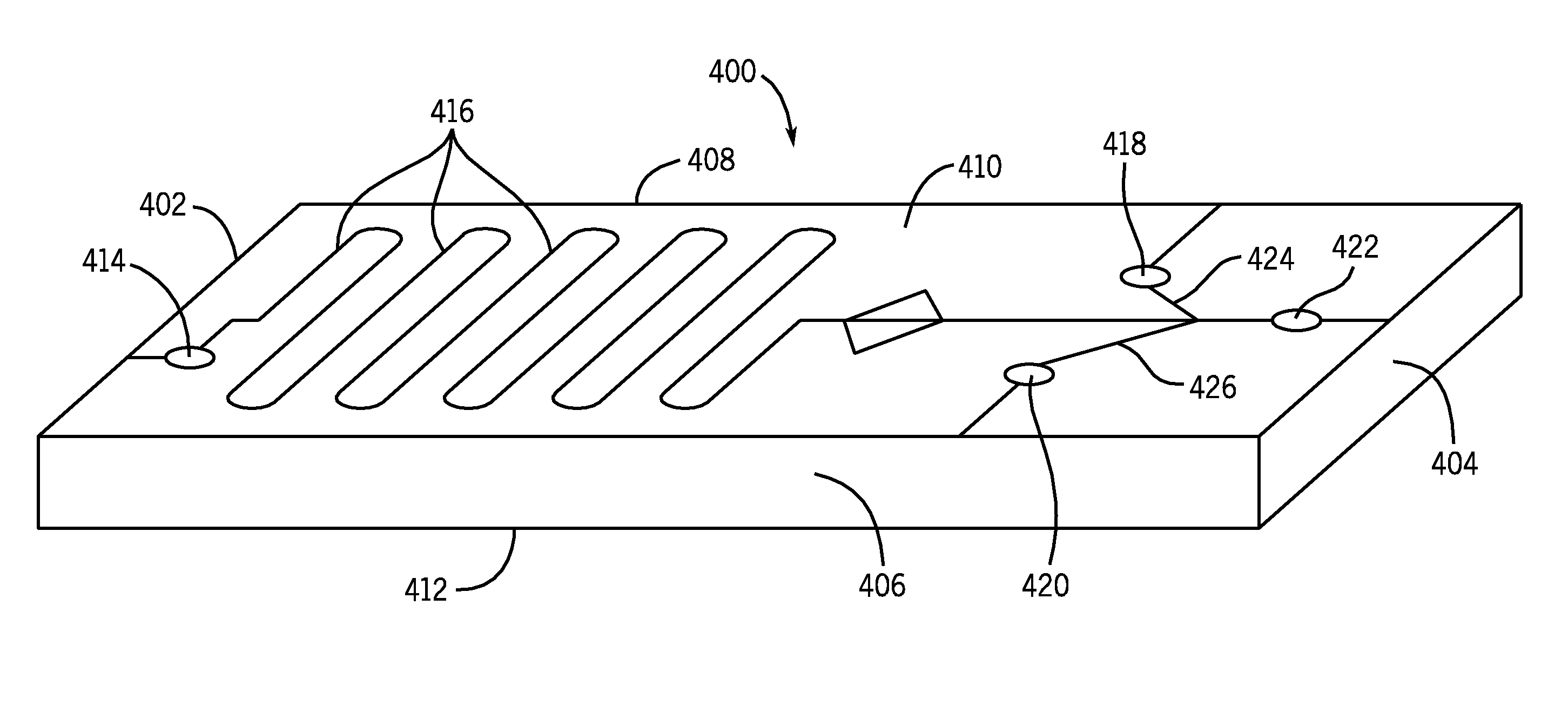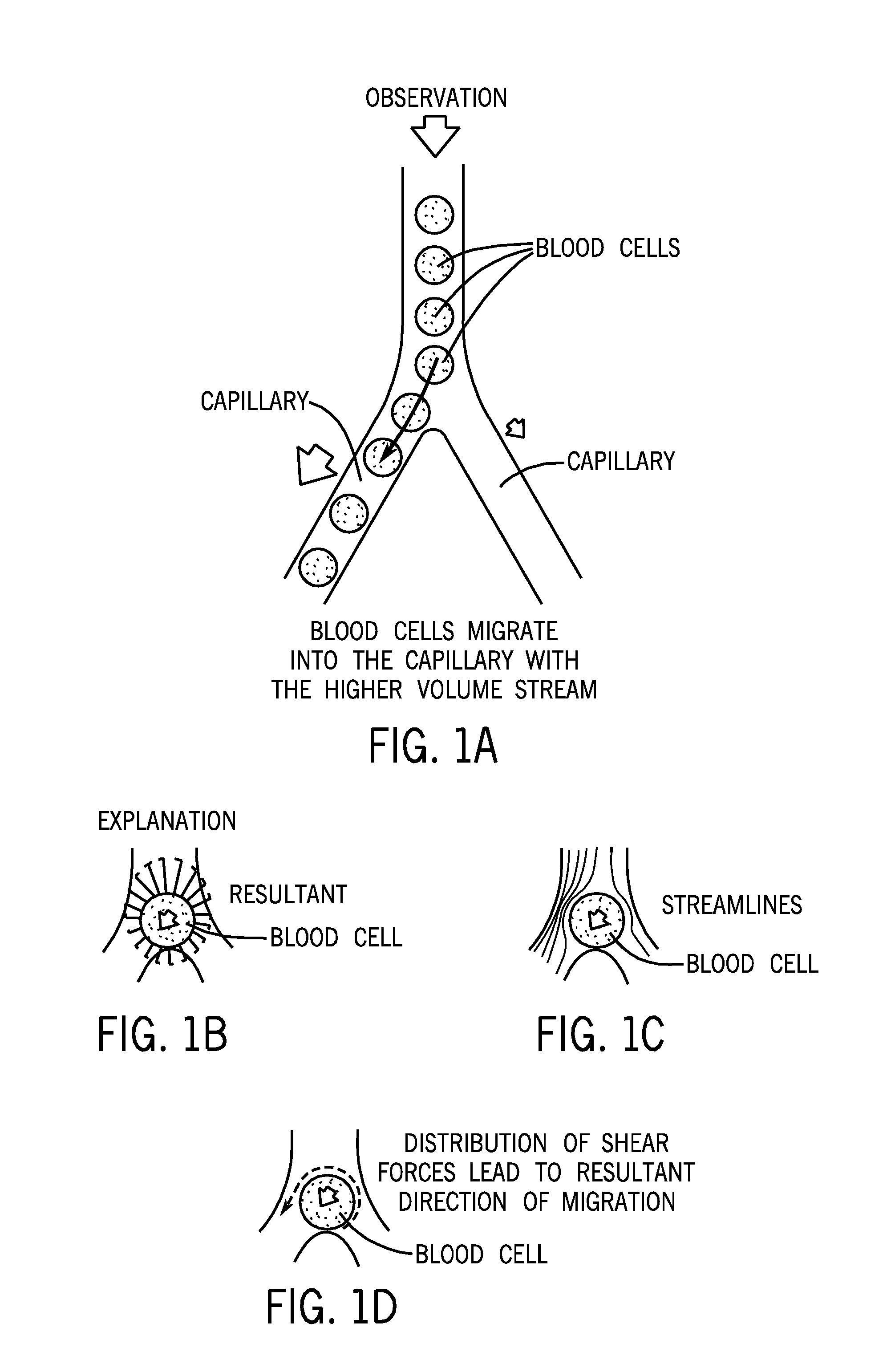Apparatus and method for separation of whole blood into plasma or serum and cells
- Summary
- Abstract
- Description
- Claims
- Application Information
AI Technical Summary
Benefits of technology
Problems solved by technology
Method used
Image
Examples
Embodiment Construction
[0028]As used herein, the expression “flow channel” means a tubular passage for liquids. As used herein, the expression “microfluidic device” means a physical element that enables the control and manipulation of fluids that are geometrically constrained to a small, typically sub-millimeter scale. Further discussion of microfluidics can be found at Microfluidics—Wikipedia, the free encyclopedia, [online]. 2010 [retrieved on 2010 Sep. 13]. Retrieved from the Internet: , pages 1-7, incorporated herein by reference. Representative examples of materials that can be used to make microfluidic devices include, but are not limited to, silicone rubber, glass, plastic, silicon.
[0029]As used herein, the expression “Reynolds number” means ρυ L / μ.
where
[0030]ρ represents density of a liquid
[0031]υ represents velocity of the liquid
[0032]L represents characteristic length of a flow channel
[0033]μ represents viscosity of the liquid
[0034]As used herein, the phrase “critical Reynolds number” means a Re...
PUM
| Property | Measurement | Unit |
|---|---|---|
| Area | aaaaa | aaaaa |
| Flow rate | aaaaa | aaaaa |
| Fluid dynamic | aaaaa | aaaaa |
Abstract
Description
Claims
Application Information
 Login to View More
Login to View More - R&D
- Intellectual Property
- Life Sciences
- Materials
- Tech Scout
- Unparalleled Data Quality
- Higher Quality Content
- 60% Fewer Hallucinations
Browse by: Latest US Patents, China's latest patents, Technical Efficacy Thesaurus, Application Domain, Technology Topic, Popular Technical Reports.
© 2025 PatSnap. All rights reserved.Legal|Privacy policy|Modern Slavery Act Transparency Statement|Sitemap|About US| Contact US: help@patsnap.com



